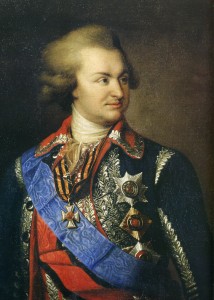While we often hear about the Russian monarchy not having that much Russian blood, that is also associated with the mass of the Russian Empire. Many of the people living within the borders of the Empire have a different ethnic identity than simply Russian. Many of them are “Little Russians”, this can mean either Belorussian or Ukrainian. However, they were counted as Russian, in the Census of 1897. Actually, over half of the people living within the borders were not ethnically Russian. While there was no group bigger than the Russians, the massive empire was bound to include numerous ethnic groups and identities from all over. This not only includes ethnic identity but all the cultural aspects that comes with that such as religion and tradition. With the expansion of the Russian Empire, it brought on these new religions and traditions that were previously not as dominant in Russia. Despite this, it seems that the Russians did not fare considerably better than their counterparts most of the time. Excluding the nobility, most Russians were in worse shape than the other ethnic groups at the time the census was taken. Even the nobility was mostly a different ethnic group. With many of the Russians tied down to serfdom for centuries, their rise to the higher social standings was difficult to come by.
Another interesting aspect of the census was the effect industrialization had on society. Some groups were much more concentrated in urban areas, notably the Jews, more than fifty percent reported to live in the cities. The development of industrialization was led by the Russians however. “Yet the majority of entrepreneurs were Russians and foreigners, and the majority of the workers Russians.” ((Kappeler 304)) As I mentioned earlier, the fact that many of the Russians were serfs and then freed allowed them to move into the cities to help participate in this industrialization. This industrialization also involved a few key ethnic groups which linked them to the cities. Their involvement from all ends of the empire led to the rapid development of train tracks which was massive for development in Russia.
The census not only helps show that Russians were not as dominant an ethnic force as they would like you to believe, but also helps us understand how industrialization went the way it did.
What prevented other ethnic groups from getting involved in industrialization?
Works Cited
Kappeler, Andreas. (Translated by Alfred Clayton) “The Late Tsarist Multi-Ethnic Empire between Modernization and Tradition.” Longman, 2001. Chapter 8

